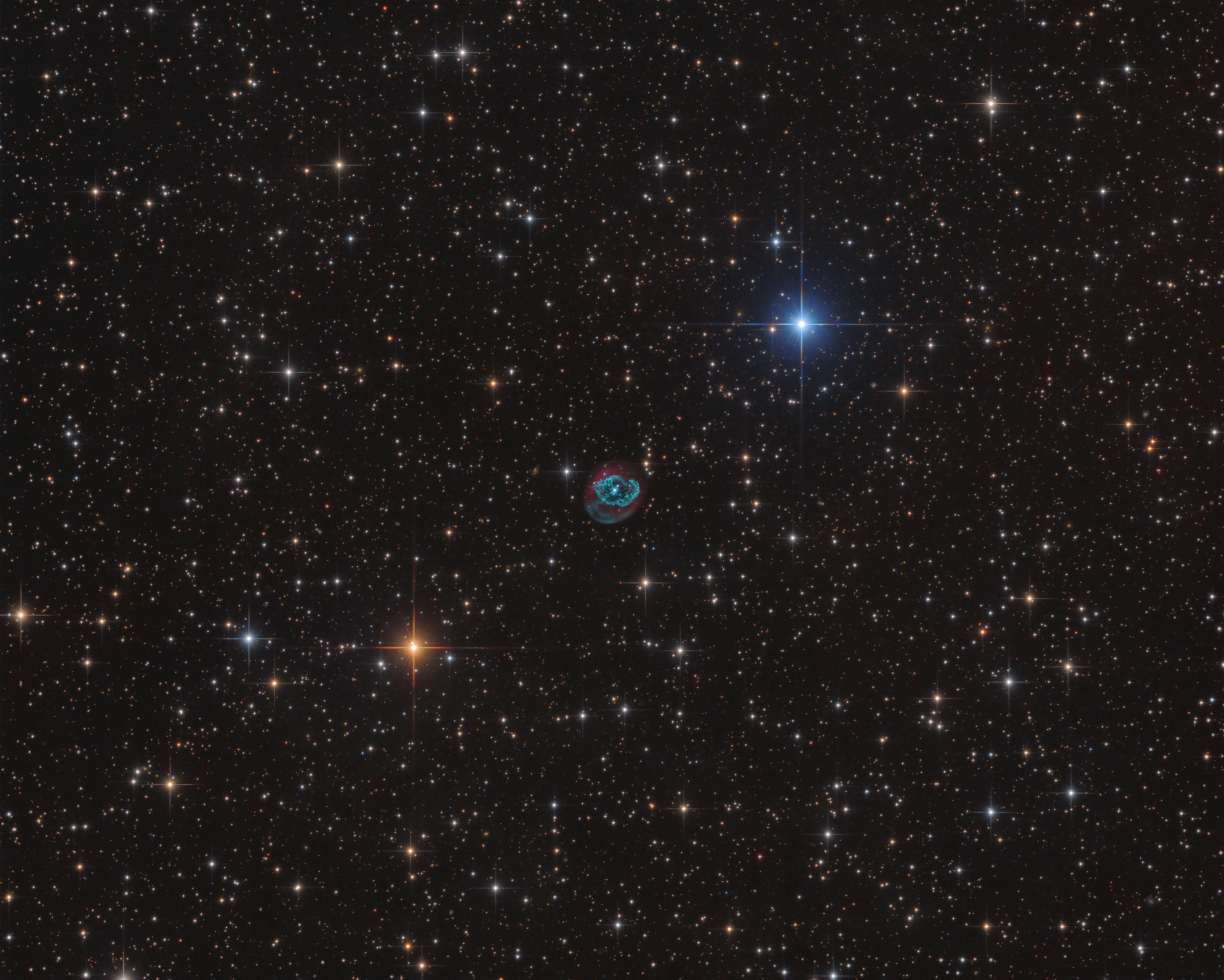
Posted on 10/16/2020 4:51:23 PM PDT by MtnClimber
Explanation: Planetary nebula Abell 78 stands out in this colorful telescopic skyscape. In fact the colors of the spiky Milky Way stars depend on their surface temperatures, both cooler (yellowish) and hotter (bluish) than the Sun. But Abell 78 shines by the characteristic emission of ionized atoms in the tenuous shroud of material shrugged off from an intensely hot central star. The atoms are ionized, their electrons stripped away, by the central star's energetic but otherwise invisible ultraviolet light. The visible blue-green glow of loops and filaments in the nebula's central region corresponds to emission from doubly ionized oxygen atoms, surrounded by strong red emission from electrons recombining with hydrogen atoms. Some 5,000 light-years distant toward the constellation Cygnus, Abell 78 is about three light-years across. A planetary nebula like Abell 78 represents a very brief final phase in stellar evolution that our own Sun will experience ... in about 5 billion years.
(Excerpt) Read more at apod.nasa.gov ...
For more detail go to the link and click on the image for a high definition image. You can then zoom by moving the magnifying glass over an area and then clicking. The side bars will move the zoomed area over the photograph.

Pinging the APOD list.
Been there. Looks nice from a distance, but when toy get there there’s not much to do.
Thank you so much for the beautiful pictures you post!
Someone asked if those “stars” were just air holes punched in the lid of the jar holding us.
That’s ridiculous, everyone knows we’re living in a computer simulation.
For those who might not know, this image has been manipulated. For example, see those spikes on those stars? They’re photo shopped.
I thought that the stars showed that starburst because they were far in front of the target of the image and were out of focus. Is that not correct?
I’m lucky to achieve a good focus on any star, let alone trying to refine a focus between two objects at say 400 light years apart. A focuser that could achieve that is way above my pay grade, if it exists.
Btw, I don’t think that’s correct. There is software available that will allow you to specify certain stars in an image to spike...And you can rotate the spikes etc...It looks real cool, but it’s manipulated.

Like this.
Btw, with the refractor style scopes, there is no secondary mirror hence no obstruction. So when there are star spikes, it’s generally means it’s been a bit manipulated. But in some cases it looks great!
OK, thanks. I am not a Photoshop user so I don’t know the capabilities.
I use PS for final processing but only to enhance the existing data in the image. Over processing or over manipulating an image can often ruin it IMO. Of course everyone’s tastes are different.
Disclaimer: Opinions posted on Free Republic are those of the individual posters and do not necessarily represent the opinion of Free Republic or its management. All materials posted herein are protected by copyright law and the exemption for fair use of copyrighted works.